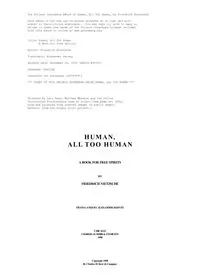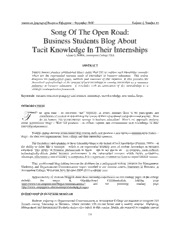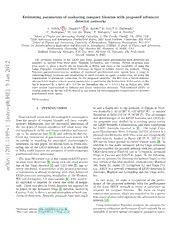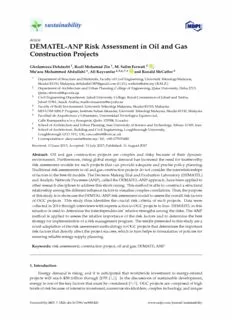
DEMATEL-ANP Risk Assessment in Oil and Gas Construction Projects PDF
Preview DEMATEL-ANP Risk Assessment in Oil and Gas Construction Projects
sustainability Article DEMATEL-ANP Risk Assessment in Oil and Gas Construction Projects GholamrezaDehdasht1,RosliMohamadZin1,M.SalimFerwati2 ID, Mu’azuMohammedAbdullahi3,AliKeyvanfar4,5,6,7,* ID andRonaldMcCaffer8 1 DepartmentofStructureandMaterials,FacultyofCivilEngineering,UniversitiTeknologiMalaysia, Skudai81310,Malaysia;dehdasht1387@gmail.com(G.D.);roslizin@utm.my(R.M.Z.) 2 DepartmentofArchitectureandUrbanPlanning,CollegeofEngineering,QatarUniversity,Doha2713, Qatar;sferwati@qu.edu.qa 3 CivilEngineeringDepartment,JubailUniversityCollege,RoyalCommissionofJubailandYanbu, Jubail31961,SaudiArabia;mailto:muazum@ucj.edu.sa 4 FacultyofBuiltEnvironment,UniversitiTeknologiMalaysia,Skudai81310,Malaysia 5 MIT-UTMMSCPProgram,InstituteSultanIskandar,UniversitiTeknologiMalaysia,Skudai81310,Malaysia 6 FacultaddeArquitecturayUrbanismo,UniversidadTecnológicaEquinoccial, CalleRumipambas/nyBourgeois,Quito170508,Ecuador 7 SchoolofArchitectureandUrbanPlanning,IranUniversityofScienceandTechnology,Tehran11369,Iran 8 SchoolofArchitecture,BuildingandCivilEngineering,LoughboroughUniversity, LoughboroughLE113TU,UK;r.mccaffer@lboro.ac.uk * Correspondence:akeyvanfar@utm.my;Tel.:+60-177033482 Received:13June2017;Accepted:31July2017;Published:11August2017 Abstract: Oil and gas construction projects are complex and risky because of their dynamic environment. Furthermore, risingglobalenergydemandhasincreasedtheneedfortrustworthy risk assessment models for such projects that can provide adequate and precise policy planning. Traditionalriskassessmentsinoilandgasconstructionprojectsdonotconsidertheinterrelationships offactorsinthebest-fitmodels. TheDecisionMakingTrialandEvaluationLaboratory(DEMATEL) andAnalyticNetworkProcesses(ANP),calledtheDEMATEL-ANPapproach,havebeenappliedto otherresearchdisciplinestoaddressthisshortcoming. Thismethodisabletoconstructastructural relationshipamongthedifferentinfluencefactorstovisualizecomplexcorrelations.Thus,thepurpose ofthisstudyistoshowcasetheDEMTAL-ANPriskassessmentmodeltoassesstheoverallriskfactors of OGC projects. This study thus identifies the crucial risk criteria of such projects. Data were collectedin2016throughinterviewswithexpertsactiveinOGCprojectsinIran. DEMATELinthis situationisusedtodeterminetheinterdependencies’relativestrengthsamongtherisks. TheANP method is applied to assess the relative importance of the risk factors and to determine the best strategyforimplementationofariskmanagementprogram. Theresultspresentedinthisstudyarea noveladaptationoftheriskassessmentmethodologytoOGCprojectsthatdeterminestheimportant riskfactorsthatdirectlyaffecttheprojectsuccess,whichinturnhelpsinformulationofpoliciesfor ensuringreliableenergysupplyplanning. Keywords: riskassessment;constructionproject;oilandgas;DEMATE;ANP 1. Introduction Energy demand is rising, and it is anticipated that worldwide investment in energy-related projects will reach $38 trillion through 2035 [1,2]. In the discussions of sustainable development, energyisoneofthekeyfactorsthatmustbeconsidered[3–5]. OGCprojectsarecomposedofhigh levelsofriskbecauseofintensiveinvestment,numerousstockholders,complextechnology,andunique Sustainability2017,9,1420;doi:10.3390/su9081420 www.mdpi.com/journal/sustainability Sustainability2017,9,1420 2of24 nature[6,7]. Theseriskscanbeeconomic,political,social,andtechnicalinnature,aswellasrelatedto thenaturalenvironmentandnaturaldisasters[8,9]. Recognizingtheriskrelatedtoenergyisnotonly aconstructionmarketneed,butalsoitisimportanttotheupstreamaswellasdownstreamoilandgas industrysub-sectors[10]. Constructionprojectsplayakeyroleinthesustainableoilandgassupply chainandprocessing[11,12]. Duetothisimportance,governmentsofdevelopingcountriesareunder pressuretoensurethatprojectswillbefinishedontimewithleastamountofriskanduncertainty[13]. Aproperriskmanagementstrategyleadstolowercostsandincreasescompetitivenessintheenergy market[14]. Therefore,it’snecessarytoidentifyandassessthemajorrisksfacedbyOGCprojects, inordertohelpcompaniesthatplanorworkinsuchprojectsdevelopplanstoensuresustainable energysupplychains. Furthermore,recognizing,highlightingandanalyzingtheimportantriskfactors associated with OGC companies can assist in proper planning, successful implementation of risk managementandappropriateresponsestoeliminate,transferorcontrolthecorrespondingrisks. Theconstructionindustryiswidelyassociatedwithahighdegreeofriskbecauseofitsnature, process, activities, technologicalcomplexity, organizationandenvironment[15,16]. ISO31000has introducedriskas“aneffectofuncertaintyonobjectives”andriskfactorhasbeendefinedasafact or situation that increases the possibility of risk, according to Cambridge Dictionary. Factors that increasethisriskareagrowingnumberofstakeholders,longdurationofaprojectandinterfacewith areactionbetweenexternalandinternalenvironment[17]. Engagementwithvariousparticipants, suchasdesigners,owners,suppliers,contractorsandsubcontractorsareanadditionalreasonfora high volume of fundamental risks [18,19]. In the body of knowledge of project risk management, thereareanumberoforderlyandofficialmethodsforidentifying,assessing,classifying,responding and managing risks during the life cycle of a project [20,21]. It is a dynamic process that tends to decreasetheprobabilityandeffectofnegativeeventsandpromotetheprobabilityandeffectofpositive events[22]toattainanoptimalgradeofriskelimination,control,andmitigation[21]. Projectriskmay haveanegativeorpositiveimpactonatleastoneoftheprojectobjectives,forexample,cost,time, quality,etc.[19,23]. Allconstructionprojectscontainriskthatcanbeminimized,managed,transferred, acceptedorignored[24,25]. Itisimpossibletoremoveallprojectrisks. Therefore,successfulprojects arethosethatidentifyrisksatanearlystageandefficientlyassessandmanagethem[15,26]. Onthe otherhand,alackofadequateattentionandassessmentofriskinaconstructionprojectisthecauseof costoverruns,poorperformance,anddelay[23,27]. Unfortunately,constructionprojectsarenotas advancedatanalyzingandassessingriskscomparedwithmanyotherindustries[28,29]. Lackofa riskmanagementmethodologyduringOGCprojectsnotonlycanleadtodelaysandcostoverruns butalsocanbecriticalforpricingenergypolicies[13]. Thus,thereisaneedforidentifyingthemost importantgrouprisksandrelatedriskfactorsbecauseoftheeffectonconstructiondecisionmaking. Therefore,toincreasethechanceofsuccessanddecreasepossibleriskinaconstructionproject,the majorgrouprisksanduncertainfactorsshouldberecognized,classified,assessedandmonitored. Recently,severalstudieshaveappliedMulti-CriteriaDecisionMaking(MCDM)techniques,such asTOPSIS,AHP,ANP,andDEA,forriskassessmentofconstructionprojects[19,30–32]. MCDMhas beenappliedinoilandgasupstreamanddownstreamindustryaswell[3,33]. Thesetechniquesare veryuseful,especiallyfordealingwithcomplexproblems,complexsystems,unclearvariablesand limitedinformation[23,34]. TraditionalriskassessmentinOGCprojectshasnotconsideredtheinterrelationshipoffactorsin thebest-fitmodels[7,35,36]. TheDecisionMakingTrialandEvaluationLaboratory(DEMATEL)and AnalyticNetworkProcesses(ANP),calledtheDEMATEL-ANPapproach,havebeenappliedtoother researchdisciplinestoaddressthisshortcoming[37,38]. AccordingtoFazlietal.[37],thecombination ofDEMATELandANPisthebestriskmitigationstrategyduetothefactthatDEMATELisableto visualizethecomplexinterrelationshipsamongcriteria. ANPassessesthedependenciesandfeedbacks amongfactorstoselecttherelativeweightsoftheriskfactors. DEMATEL-ANPisthusaneffective methodthathelpsmanagerstoselectthebeststrategiestorespondtotheoverallriskseffectively. Sustainability2017,9,1420 3of24 Theobjectiveofthispaperistodeterminethekeyriskgroupsandriskfactorsandproposearisk assessmentframeworktoevaluatetheoverallrisksinOGCprojects. Tofindaninfluencestrategyto respondtopotentialriskswithinOGCprojects,itisnecessarytoanalyzeinterdependenciesamong risksandidentifythemostimportantthatinfluencerisks. Theintegratedhybridmethodologyofthe DEMATELandANPapproacheswasemployedtodeterminetheinterdependencyoftherisksandthe importanceofeachriskfactor. Thefinalmodelisalsosimulatingtheimpactofdifferentpossiblerisks inorganizationandtheirperformanceinOGCprojects. DEMATEL is a complete method for constructing a structural model to solve the complex interrelationships by describing cause and effect groups or factors. The DEMATEL technique is accordingtodiagraphswhichcandivideinfluencecriteriaintocauseandeffectgroups. Basedon theresultsobtainedfromDEMATELmethod,theANPmodelcanbeconstructed. Infact,DEMATEL solvestheproblemofunrealisticinterdependenciesofANPthatweredeterminedinthefirststep ofthesaidmethod. ANPmethodhasbeenmadetomanageuncertainhumanjudgments[39]. The DEMATEL-ANPapproachhasbeenemployedinordertopromotetheabilitiesoftheANPmethodfor managinginconsistentanduncertainjudgmentsofdecisionmakersinriskgroupprioritizationand relativeriskfactorweightswithinOGCprojects. Therestofthispaperisorganizedasthefollowing. InSection2,relatedliteraturegapandthe contribution of this study towards risk assessment in OGC projects are presented. Subsequently, Section3describestheriskmanagementprocessincludingthemostimportantriskgroupsandrisk factors as well as the fuzzy risk assessment process. In addition, both DEMATEL and ANP are introduced. Next, in Section 4, a hierarchical structure of project risk factors for OGC projects is proposed. ThesaidsectionalsoentailsDEMATEL-ANPcalculationoutcomesandtheresultsofthis research. Finally,Section6concludesthestudy. 2. ProblemStatementandOurContributions Thispaperinvestigatesthesignificantriskgroupsandassociatedriskfactorsinordertopropose ariskassessmentmethodologyforOGCprojects. Thequestionsthathavebeeninvestigatedinthis researchare: (1)Whatarethecurrentpracticesofriskmanagementinconstructionprojects? (2)What aretheimportantriskgroupsandriskfactorsthatinfluencetheimplementationofriskmanagementin OGCprojects? (3)WhatwouldbetheresultofapplyingtheDEMATEL-ANPmethodtoconstruction riskassessmentofoilandgasprojects? Wecandividethesignificanceofthisstudyintotwosections: First,constructionriskrelatedtooil andgascompanieshasnotbeenthoroughlystudied. AccordingtoHaghnevisandSajedi[40],despite variousstudiesandproposedmethodologiesandmodelsformanagingrisk,aspecificmethodologyor modelwithconcentrationsonasingleindustryanditsuniqueapplicationsstillhadnotbeendeveloped ThesameobservationalsoiswellunderstoodbyresearchreportedbyGilbertetal.[41]. Also,previous studiesonriskmanagementwithinOGCprojects,concentratedmoreonriskidentificationratherthan proposingnewriskassessmentmethodologies[7,35]. Inthisregard,thereisalackofdevelopmentofa methodologyfortheparticularassessmentofrisksforOGCprojects. Furthermore,basedonKuoand Lu[32],itisnecessarytostudymorecreativeriskassessmentresultsfurther. Therefore,thepurposeof thisstudyistoproposeanovelmethodologyforriskassessmentthatissuitableforOGCprojects. Secondly,thispaperinvestigatesthesignificantlevelofinterdependencybetweencriticalrisk factors necessary for developing an implementation plan for risk management in OGC projects. DEMATEL-ANPhasbeenappliedtoassessandpredictthelevelofimportancefordeterminedrisk factorstodevelopariskmanagementimplementationplaninOGCprojects. Inthisrespect,DEMATEL isusedtoconstructtheinterrelationsamongtheriskfactorsintheintegratedmodel. Thismethod teststherelativestrengthbetweenriskfactors. Also,theANPtechnique,whichisusedfordefining therelativeimportanceofriskfactors,ispresented. Thismethodisusedforweightingandprioritizing criticalriskfactorsinOGCprojects. Sustainability2017,9,1420 4of24 3. RiskManagement Riskmanagementisoneofthemostimportantpartsofdecisionmakingbecauseriskhasserious effectsonquality,productivity,performanceandbudget[42,43]. Constructionprojectsareexposedto highlevelsofriskanduncertaintybecauseoftheirdynamicandcomplexnature[44,45].Projectsuccess isthreatenedbyrisks,andignoringriskhasbeenshowntobeasourceoftimeandcostoverrunsin constructionprojects[42]. Riskmanagementisasignificantpartofprojectmanagementbecauseit involvespredictingtheoccurrenceofeventsthathaveanegativeeffectontheprojectobjectiveand definingproperactionstominimizetheimpactoftheseevents[46,47]. Severalstudieshavedefinedriskmanagement,buttheconclusionofthesestudiesismostlyto minimizetheriskimpactandmaximizetheopportunities[48–50]. Riskmanagementisapolicythat canbedescribedasaplanorprincipletomakedecisionstoobtainthedesiredconsequences[8,51]. TheISO31000:2009standardrecommendsariskmanagementframeworkthatusespolicies,practices, andproceduresthroughouttheorganization. Riskmanagementisamethodthatfunctionstoidentify, classify and quantify all risks related to a project or business so that an informed decision can be madeformanagingtherisks[15]. Riskmanagementisaneffectivemethodthatnotonlycanhelp identifydifferenttypesofrisksbutalsoassistinmanagingtheserisksintheconstructionprojectlife cycle[19,21]. Itisproventhatriskmanagementisnecessaryforsuccessfulprojects, andthewholemethod isemployedinvarioussectorsofconstructionprojectstoassurethequalityoftheproductinthese areas [5,32]. There is a strong connection between the level of project success and focus on risk management [52]. Hence, implementation of risk management has been identified as critical for constructionprojectstoincreasetheirperformanceandensureachievementofprojectobjectives[30,53]. Thesuccessofriskmanagementrequiresawideassessmentofriskmanagementprocesses[32]. In the said field, numerous studies that have suggested various processes for risk management. Aformalprocessofriskmanagementcanbedividedintoseveralcategories,i.e.,riskidentification andclassification,riskassessment,andriskresponse[54–56]. PMI[57]classifiedriskmanagement processintosixstages,namely(1)riskmanagementplanning;(2)riskidentification;(3)qualitativerisk analysis;(4)quantitativeriskanalysis;(5)riskresponseplanning;and(6)riskmonitoringandcontrol. Ontheotherhand,Althausetal.[58]categorizedsixmainsteps,whichincluded(1)identificationof keyissues,whichcouldbeproblemsinthefuture;(2)generatingcreativeanalysis;(3)presentation ofnewmethods,whicharesimilartodevelopingapolicyinstrument,coordinationandconsultancy; (4)decisionmaking;(5)operation;and(6)evaluationofpolicyefficiency. Consequently, risk management can be summarized as a group of processes that involve recognizing,assessingandrankingrisksbymanagerialresource,monitoringandcontrollingwith organizedandeconomiceffort,whichwouldsubsequentlyhelptoreducetheimpactofundesired eventsthatcouldaffectthesuccessofaproject[59]. Inaddition,aneffectiveriskmanagementprocess requires a project manager to be involved in certain tasks and responsibilities such as promoting confidencetodeliverprojectobjectives,providingaseriesoffavorablealternativeactions,developing chanceofsuccess, reducingundesiredeventsanduncertainties, improvingactualestimating, and reducingreworkthroughpromotingteamawarenessaboutrisk[60]. Thissectionisfocusedonseveralissues. Firstly,itreportstheclassificationandidentificationof themostimportantgroupofrisksaswellasriskfactorsinanOGCproject. Secondly,relatedworksfor riskmanagementarediscussed. Thirdly,theconceptsofAnalyticalNetworkProcess(ANP)approach aswellasDecisionMakingTrialandEvaluationLaboratory(DEMATEL)areintroduced. Figure1 presentsanoverviewofariskassessmentprocess,whichisalsoahybridproposedmodelusingboth ANPandDEMATEL.AsshowninFigure1,themodelconsistsofthreemainsteps,whichincluderisk identificationandclassification,riskassessmentbasedonbothANPandDEMATEL,anddetermining themostimportantgroupofrisksandriskfactors. Sustainability2017,9,1420 5of24 Sustainability 2017, 9, 1420 5 of 25 start Classification and identification risks Establish risk Identify risk groups factors Construct Hierarchical structure of Project Risk Apply DEMATEL to analyze the interdependent relationship among the risks Apply ANP to calculate the weights of the risks Determine the most important risk group and risk factors for oil and gas construction projects Finish FFiigguurree 11.. DDEEMMAATTEELL--AANNPP rriisskk aasssseessssmmeenntt ffrraammeewwoorrkk.. 3.1. Classification and Identification of Risks 3.1. ClassificationandIdentificationofRisks Risk identification means the method of formulating those risks that may impact project Riskidentificationmeansthemethodofformulatingthoserisksthatmayimpactprojectobjectives objectives and recording their characteristics [34]. PMBok [61] has defined risk classification as a and recording their characteristics [34]. PMBok [61] has defined risk classification as a structure structure that ensures the effectiveness and quality of the risk identification process into a reliable thatensurestheeffectivenessandqualityoftheriskidentificationprocessintoareliablelevel. Risk level. Risk classification and identification is a significant part of risk management because several classificationandidentificationisasignificantpartofriskmanagementbecauseseveralrisksoccurin risks occur in construction projects [62]. The goal of risk identification is to prepare a list of probable constructionprojects[62].Thegoalofriskidentificationistopreparealistofprobablerisksthatshould risks that should be managed during a project [57]. The risk factors that are present or anticipated bemanagedduringaproject[57]. Theriskfactorsthatarepresentoranticipatedshouldbeidentified should be identified both for their likelihood and impact on project objectives [63]. Risk identification bothfortheirlikelihoodandimpactonprojectobjectives[63]. Riskidentificationandclassification and classification enables the user to enhance the transparency of the analysis [64,65]. The lack of enablestheusertoenhancethetransparencyoftheanalysis[64,65]. Thelackofidentificationand identification and classification of risks according to their sources, determination of the possibility of classificationofrisksaccordingtotheirsources,determinationofthepossibilityofanoccurrenceand an occurrence and the effect on construction objectives are the main problems of implementing risk theeffectonconstructionobjectivesarethemainproblemsofimplementingriskmanagementandrisk management and risk analysis [45,66]. It is necessary for construction projects to identify and deal analysis[45,66]. Itisnecessaryforconstructionprojectstoidentifyanddealwithuncertainrisks(some with uncertain risks (some risks are not uncertain, as they can be easily identified before starting a risksarenotuncertain,astheycanbeeasilyidentifiedbeforestartingaproject,forinstance,weather project, for instance, weather conditions). Evaluating their impact on the project objectives helps with conditions). Evaluatingtheirimpactontheprojectobjectiveshelpswithplanningandmanagingeach planning and managing each potential source of risk [67]. It is impossible to identify all risks in a potentialsourceofrisk[67]. Itisimpossibletoidentifyallrisksinaproject[15]. Identificationofall project [15]. Identification of all risks is time consuming and not productive; therefore, it is important risksistimeconsumingandnotproductive;therefore,itisimportanttohighlightthemostcritical to highlight the most critical risks in construction projects [62]. risksinconstructionprojects[62]. Construction risks can be classified and identified using different techniques and methods. Constructionriskscanbeclassifiedandidentifiedusingdifferenttechniquesandmethods.Several Several researchers classify risk according to the source and origin of the risk [15,19,49,68,69] or type researchersclassifyriskaccordingtothesourceandoriginoftherisk[15,19,49,68,69]ortypeofrisk[70]. of risk [70]. In addition, some studies have categorized risk into internal and external groups based Inaddition,somestudieshavecategorizedriskintointernalandexternalgroupsbasedonthesourceof on the source of the risk [62,71,72]. The difference between internal and external risk is that internal therisk[62,71,72]. Thedifferencebetweeninternalandexternalriskisthatinternalrisksarerisksthat risks are risks that are under the control of the project management team, while external risks are areunderthecontroloftheprojectmanagementteam,whileexternalrisksareoutsidethecontrolof outside the control of the team [73]. Brainstorming, interviews, checklists, benchmarking, theteam[73]. Brainstorming,interviews,checklists,benchmarking,questionnaires,Delphitechnique, questionnaires, Delphi technique, experts’ evaluation, and past experience are the most frequent experts’evaluation,andpastexperiencearethemostfrequentmethodsusedforqualitativeriskfactor methods used for qualitative risk factor identification in management studies [46,66,74,75]. identificationinmanagementstudies[46,66,74,75]. AccordingtoPMI[57],thebestmethodistheone According to PMI [57], the best method is the one that the project team is most familiar with and most thattheprojectteamismostfamiliarwithandmostobtainedfromtheprojectobjectives. obtained from the project objectives. Risk identification and classification has been performed in many fundamental studies for Risk identification and classification has been performed in many fundamental studies for constructionprojects. Theoutcomeofthesestudiesistheclassificationofnumerousrisksthatimpact construction projects. The outcome of these studies is the classification of numerous risks that impact construction project objectives. Flanagan and Norman [55], and Perry and Hayes [76] classified construction project objectives. Flanagan and Norman [55], and Perry and Hayes [76] classified eight eight major risks: design, material, planning, weather, subcontractors’ manpower, subcontractor major risks: design, material, planning, weather, subcontractors’ manpower, subcontractor co- ordination, skill and techniques and poor workmanship. Abdou [77] grouped risks into three subclasses, which are financial, time and design. In a study by Kalayjian [78] about hidden risk Sustainability2017,9,1420 6of24 co-ordination, skill and techniques and poor workmanship. Abdou [77] grouped risks into three subclasses, which are financial, time and design. In a study by Kalayjian [78] about hidden risk frequentlyencounteredinthirdworldconstructionprojects,heintroducedfourgroupsofrisksthat arecommoninglobalconstructionprojects: political,financial,weatheranddesign. TahandCarr[79] dividedprojectriskintointernalandexternalrisksusingthehierarchicalriskbreakdownstructure (HRBS).Chapman[49]recognizedandcategorized58risksintofourgroups: project,environment, industryandclient. Shenetal.[80]presented58riskfactorsofconstructionjointventuresinChinaand classifiedthemintosixmaingroupsbasedonthenatureoftherisk: legal,policyandpolitical,legal, financial,managementandtechnical. KartamandKartam[70]proposed26typesofrisksassociated withconstructioncompaniesinKuwait. Lametal.[81]presented16riskfactorsrelatedtoconstruction projectsintermsofcontractorcapability,contractualandlegal,politicalandsocietal,economicand physical. Zou et al. [15] introduced 85 risk factors for construction in China that were prioritized accordingtotheireffectsondistinctiveprojectobjectivesintermsoftime,quality,environment,cost andsafety. Atthesametime,Tangetal.[82]intheirresearchfortheconstructionindustryinChina presented32riskfactorsinfivegroups: quality,design,safety,financialandfacility. Karimetal.[83], intheirresearchaboutcontractor’sperceptionsofsignificantrisksinconstructionprojectsinMalaysia, classified25risksinfivecategoriessuchasconstruction,political,design,financialandenvironment. Tadayonetal.[84]found11typesofrisksforconstructionprojectsinIran: financial, construction, product, political, environment, technological, geographical, geotechnical, communication, legal andsocial. In a recent study, Kuo and Lu [32] investigated the relative impact of 20 risk factors on the performance of metropolitan construction projects. These risks were divided into five categories: design,constructionmanagement,socialandeconomy,safetyandnaturalhazard. Taylanetal.[19] assessedaconstructionprojectinSaudiArabiaanditsoverallriskforanuncertainandincomplete situation.Theyevaluated30riskfactorsandclassifiedthemintofivemaincategories:cost,time,quality, environmentsustainabilityandsafety. Sixteenriskfactorswereintroducedandrecognizedascritical riskfactors. Eletal.[85]evaluatedtheriskfactorsthataffecttimeandcostcontingencyinconstruction projectsinEgypt. Theydivided70riskfactorsintofourcriteriaandthirteensubcriteria. Thefirst criterion is the site condition, which has three sub criteria, which are environmental, sub-surface andsitelocation. Thesecondcriterionisprojectparties,whichisdividedintolabor,equipmentand material. Thethirdandfourthcriteriaareprojectpartiesandprojectfeatures,respectively,whichhave thesubcriteriaofowner,engineeringdesign,contractor,projectmanagement,financial,politicaland schedule. DziadoszandRejment[66]presentedeightriskfactorsinthethreegroupsoftime,budget anddesigntocomparethreedifferentmethodsofriskanalysisinconstructionprojects. Baghdadi andKishk[72]classified54riskfactorsforanairportconstructionprojectintothreelevels: internal, externalandforcemajeure. RiskmanagementrelatedtoOGCprojectshasnotbeenthoroughlystudied. Therearejustafew studiesthathavefocusedonriskmanagementinthissectorofconstructionprojects. Thuyetetal.[7] assessed 59 major risk factors related to OGC projects in Vietnam. Ten of these risks factors are identified as the most critical factors. Mubin and Mubin [86] identified 40 risk factors for pipelineconstructionprojectsinPakistanandclassifiedthemintoeightgroups: political,economic, organization,investment,technological,security,naturaldisasterandecologicalrisk. Inotherresearch byMubinandMannan[36],theyinvestigatedtheriskfactorsrelatedtoengineering,procurementand construction(EPC)contractsforoilandgasprojects. Theyidentified168riskfactorsandclassified themintosevengroups: financial,human,quality,procurementandcontractual,projectmanagement, proposalandengineering. El-Shehabyetal.[35]evaluatedtheriskfactorsrelatedtoconstructionof off-shoreoilandgasprojects. Fifty-nineriskfactorswereidentifiedinthisresearchandthetopnine riskswererecognizedascriticalrisks. Table1presentsataxonomyofclassificationandidentification ofriskinconstructionusedinthisstudy. Sustainability2017,9,1420 7of24 Table1.Taxonomyofclassificationandidentificationofriskinconstruction. NumberofRisk RiskFactorIdentification ProjectType RiskClassification Author Factors Techniques 1.Legal 4.Financial Pastexperience 2.Political ConstructionJointVenture 5.Technical Shenetal.[80] 58risks Interview 3.Management 6.Market Questionnairesurvey Interview 1.Environment 3.Project ConstructionDesignManagement Chapman[49] 58risks Brainstorming 2.Industry 4.Client Delphi 1.Political 3.Weather ThirdWorldConstructionProject Kalayjian[78] Notspecified Interview 2.Financial 4.Design 1.Economicrelated 2.Political-related 3.DesignRelated GeneralConstructionProject 4.Levelofcooperation BaloiandPrice[68] 36risks Literaturereview 5.Constructionrelated 6.Estimatorrelated 7.Fraudulentpracticesrelated 1.Contractorcapability Literaturereview 2.Contractualandlegal Consultingexperts GeneralConstructionProject 3.Economic Lametal.[81] 16risks Interview 4.Physical Questionnaire 5.Politicalandsocietal Literaturereview 1.Time 4.Safety Consultingexperts GeneralConstructionProject 2.Cost Zouetal.[15] 85risks 5.Environment Interview 3.Quality Questionnaire 1.Design 2.Constructionmanagement Literaturereview MetropolitanConstructionProject 3.Socialandeconomy KuoandLu[32] 20risks Consultingexperts 4.Safety Interview 5.Naturalhazard 1.Cost 4.Environmentand Consultantexperts GeneralConstructionProject 2.Time Sustainability Taylanetal.[19] 30risks Interview 3.Quality 5.andSafety Questionnaire Sustainability2017,9,1420 8of24 Table1.Cont. NumberofRisk RiskFactorIdentification ProjectType RiskClassification Author Factors Techniques Literaturereview 1.Socio-cultural 4.Industry Consultingexperts GeneralConstructionProject 2.Economic AydoganandKoksal[87] 19risks 5.Project Interview 3.Politic Questionnaire Literaturereview 1.ProjectFeatures 3.SiteCondition GeneralConstructionProject Eletal.[85] 70risks Consultingexperts 2.ProjectParties 4.Resource Questionnaire 1.Construction, 4.Financial Literaturereview GeneralConstructionProject 2.Political, Karimetal.[83] 25risks 5.Environment questioner 3.Design, Checklist Brainstorming OGCProject Notspecified Thuyetetal.[7] 59risks Literaturereview Consultingexperts Informationcollection 1.Political, 5.Technological, Documentationreview 2.Economic, 6.Security, GasPipelineConstructionProject MubinandMubin[86] 40risks Assumptionanalysis 3.Organization, 7.NaturalDisaster, Checklistanalysis 4.Investment, 8.Ecological Diagrammingtechniques Documentationreviews Informationgathering Checklistanalysis OGCProject Notspecified El-Shehabyetal.[35] 59risks Assumptionsanalysis Diagrammingtechniques RiskRegister Sustainability2017,9,1420 9of24 3.2. RiskAssessmentRelatedWork Riskassessmentisdefinedasthe“procedureofprioritizingrisksforfurtheranalysisbyassessing and combining, generally, their probability of occurrence and impact” [34]. Risk assessment and analysisaresignificantpartsoftheriskmanagementprocedure. Thereisadirectconnectionbetween successful risk management and effective risk assessment because the assessment results must be employedintheriskmanagementplan[68]. Riskassessmentisatechniqueforrecognizingthesources ofrisk,identifyingprobableriskfactorsandcomputingthepotentialimpactofriskfactorsonproject success[88,89]. Therefore,employingeffectiveriskassessmenttechniquesinmanagingpotentialrisks associated with construction variables is very important for the successful delivery of the project objectives[15]. Oflate,manyriskmanagementtechniqueshavebeenestablishedbasedonlinguisticassessments, whichiscontrarytonumericalvalues. Thefuzzysetstheory[90]isappropriatefordealingwithdata, whichareimpreciseandhavelinguistictermssuchasuncertainty,highrisk,orseriousimpact[30]. AsarguedbyNieto-MoroteandRuz-Vila[34], thesaidexpressionsmaynotpresentanymeaning or context, but the fuzzy sets theory is able to put meaning into them when they are defined by mathematicallogs. SeveralstudiesusedMulti-CriteriaDecisionMaking(MCDM)techniquessuchasTOPSIS,AHP, andANPforriskmanagementassessments. CarrandTah[91]usedafuzzyapproachinaconstruction projecttoidentifytherelationshipbetweentherisksourceandtheeffectsontheprojectperformance measures. Theimplementationoffuzzylogichelpedtheriskmanagementbyusinganexpressive linguisticvariabletodescribetheriskanditsconsequence. Also,aprototyperiskmanagementmodel wasdevelopedusingfuzzylogictosupporttheriskmanagementframeworkthatwaspresentedby them. Theresultsshowedthatriskmanagementimprovedtheunderstandingofthoseinvolvedin theprocess. Furthermore, riskhandlingandprojectperformancewereimproved. Zengetal.[30] presented a new methodology using fuzzy AHP for risk analysis in construction projects to deal with associated risks in complicated situations. In addition, an analytical hierarchy process was modifiedtoprioritizeandstructurethedrivingriskfactors. Theresultsdemonstratedthatthefuzzy technique is a reasonable application for efficiently and effectively assessing risk in construction projects.DikmenandBirgonul[92]proposedamethodologyforratingcostoverrunrisksusingafuzzy riskassessmentforinternationalconstructionprojects. Theirsuggestedmethodologyappliedafuzzy riskratingmethodwithaneffectivediagrammingprocessforriskidentification. Theeffectivediagram easilymodeledtheinfluenceriskfactorsandinteractionsamongtheseriskfactors. Nieto-Moroteand Ruz-Vila[34]proposedamethodologyforriskmanagementinconstructionprojectsbasedonfuzzy settheoryandtheAHPapproachtomodelalargenumberofrisks. Additionally,theydevelopeda hierarchicalweightingmethodtoassesstheweightofrisksusingpairwisecomparisonsforthesakeof handlingproblemswithalargenumberofrisksinthemethodology. KuoandLu[32]assessedrisks forametropolitanconstructionprojectbyemployingtheFuzzyMultipleCriteriaDecisionMaking (FMCDM)approach. TheyemployedConsistentFuzzyPreferenceRelations(CFPR)toinvestigateand measuretherelativeimpactofriskgroupsandrelatedriskfactorsonprojectperformance. Moreover, theCFPRwereusedtoanalyzetheprobabilityofoccurrenceandevaluatethelevelofriskfortheoverall project. Taylanetal.[19]employedtheintegrationoffuzzyTOPSISandfuzzyAHPmethodology, which is called a hybrid application. They used hybrid fuzzy TOPSIS and fuzzy AHP model for assessingthewholerisksofconstructionprojects, whicharevague, impreciseanduncertain. The fuzzyTOPSISmethodwasusedforgroupdecisionmaking,andfuzzyTOPSISwasappliedtoassess theweightoffuzzylinguisticvariablesforalltheconstructionprojectriskfactors. AydoganandKoksal[87]prioritizedtherisksofinternationalconstructionprojectsusingthe analyticalnetworkprocess(ANP).TheANPwasselectedbecausetheyrecognizeditwasthemost appropriatetoolinconstructingtheframeworkofinternationalconstructionriskfactorsandanalyzing theprioritiesoftheseriskfactorsonpartnerselectionbecauseitallowedinterdependentrelationships inamulti-criteriadecisionmodel. Chemwenoetal.[93]proposedanewmethodologyforchoosing Sustainability2017,9,1420 10of24 thesuitableriskassessmentmethodforthemaintenancedecision-makingfield. Theyintegratedthe analytical network process into the methodology for prioritizing and accounting for the opinions andjudgmentsofindustrialandacademicexperts. FazliandMavi[37]proposedadecisionnetwork framework for risk assessment in crude oil supply chains that incorporated DEMATEL and ANP. DEMATELanalyzedtheinterdependencyamongtheriskfactorsandANPrankedtheriskfactorsand evaluatedtheimportanceofeachriskfactor. Therecentstudiescarriedoutonoilandgasprojectsdonotcoverallthekeywordsofthisstudy suchasriskassessment,oilandgas,constructionprojectswithinaunitstudy. Forexample,thestudy byWood[94]focusedonlyonunderstandingofprojectperformanceforoilandgasindustryespecially forthoseprojectsassociatedwithmajortime-cost-qualityuncertainties. Thisstudydidnotconsider identificationofriskswithintheprojectsandtheireffectsonprojectobjectivessuchastime-cost-quality. AstudybyMeidellandKaarbøe[95]aboutenterpriseriskmanagement(ERM)withinanoilandgas companysetting,focusedontheinfluenceofERMondecisionmakinginanorganization.Inthatstudy, therisksassociatedwithconstructionprojectshadnotbeenconsidered. Also,theotherstudiesthat haveconcentratedonOGCprojects,suchasthatbySalazar-Aramayoetal.[96],havenotintroduced risksorproposedriskassessmentmethodologytoevaluatetheoverallrisksinOGCprojects. According to the existing literature review and to the authors’ best knowledge, despite the numerousstudiesrelatedtoriskassessmentwiththeapplicationofMulti-CriteriaDecisionMaking (MCDM)techniquessuchasfuzzyAHP,fuzzyTOPSISandfuzzyANP,asynthesizedriskassessment using DEMATEL-ANP has not yet been established in construction projects. While a few studies have been carried out in the field of construction projects with the same methods, those studies werenotwithinthescopeofriskassessment. Therefore,theaimofthisstudywastouseahybrid tool process while incorporating both the DEMATEL and ANP techniques to achieve a novel risk assessmentmethodologyintheareaofconstructionprojects. DEMATELwasappliedtoexposethe relationshipbetweenthedimensionsandvariablesaswellastodiscovertheinterdependencyand feedbackbetweenthem. Inthisstudy,dimensionwassourceofrisks(riskgroup)andvariableswere risk factors. Conversely, ANP was used to determine the dependency and feedback between the variablesinadditiontodecidingtheweightofthedimensionandvariables. 3.3. DEMATEL TheDEMATELmethodwascreatedbytheGenevaResearchCenterbasedonexpertknowledge to analyze various factors that affect a system and expose both strength and influence among the factorsinadditiontoconvertingthemintoastructuralmodel[97]. Thisiscrucialasitisimportantand helpfultounderstandbetterandsolvethecause-and-effectrelationshipbetweenthefactors[38,98]. AccordingtoUygunetal.[39],theDEMATELconceptisadaptedindifferentacademicfields,andit hasbeenprovenasaneffectivetooltosolvedifficultandcomplicatedproblems. ThesixproceduresthatareinvolvedintheDEMATELmethodologyaredescribedasthefollowing. Step1: Calculatingtheaveragedirect-relationmatrix. Firstly,anumberofexpertsarerequested toformpairwisecomparisonsaccordingtothedirectinfluencebetweenthecriteria. Aninfluence scaleof0(noinfluence),1(lowinfluence),2(mediuminfluence),3(highinfluence),and4(veryhigh influence)isusedforcomparison. IfthereareKrespondentexpertswithnfactors,theresultsformed foreachexpertindirectrelationofan×nmatrix,whichdonatedboth xk andij,istheinfluential ij levelofcriterionitocriterion j. ThemaindiagonalofthematrixiszerobecauseinDEMATEL,the self-influenceofcriteriaisnotassessed. 0 x ··· x 12 1n x 0 ··· x 21 2n X = ... ... ... ... x x ··· 0 1n n2
Description:The list of books you might like

Mind Management, Not Time Management

Can’t Hurt Me: Master Your Mind and Defy the Odds

$100m Offers

Believe Me
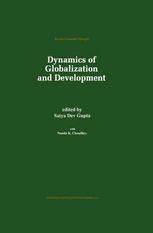
Dynamics of Globalization and Development
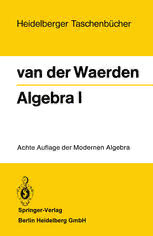
Algebra I

By Any Other Name
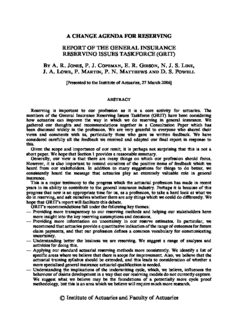
By AR Jones, PJ Copeman, E
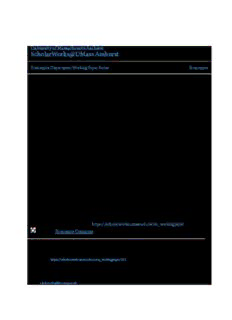
by Arrigo Opocher and
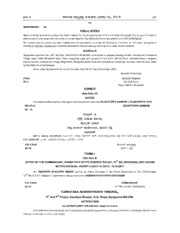
Karnataka Gazette, 2014-01-16, Part-5
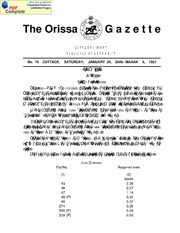
Odisha Gazette, 2006-01-07, No. 78
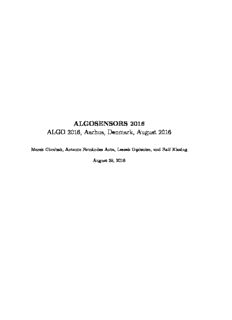
ALGOSENSORS 2016 ALGO 2016, Aarhus, Denmark, August 2016
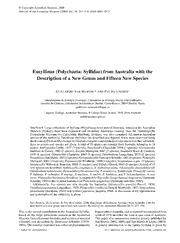
Eusyllinae (Polychaeta: Syllidae) from Australia with the description of a new genus and fifteen new species
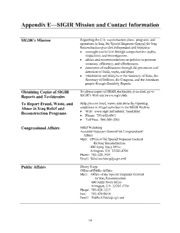
DTIC ADA545428: Department of State Contract to Study the Iraq Reconstruction Management System

TS 129 198-11 - V5.8.0 - Universal Mobile Telecommunications System (UMTS); Open Service Access (OSA) Application Programming Interface (API); Part 11: Account management Service Capability Feature (SCF) (3GPP TS 29.198-11 version 5.8.0 Release 5)
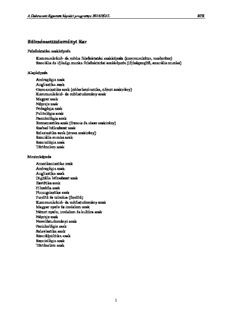
Bölcsészettudományi Kar

Tabakschwärmer, Bücherwürmer und Turbo-Socken: Chemische Schwärmereien aus 10 Jahren Ausgeforscht
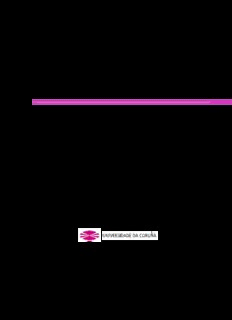
Amarre de buques en reparación : actuación ante alertas meteorológicas

Miniature Railways

2006 Social Club Program

c Copyright 2012 Anna Marie Rogers Dixon
